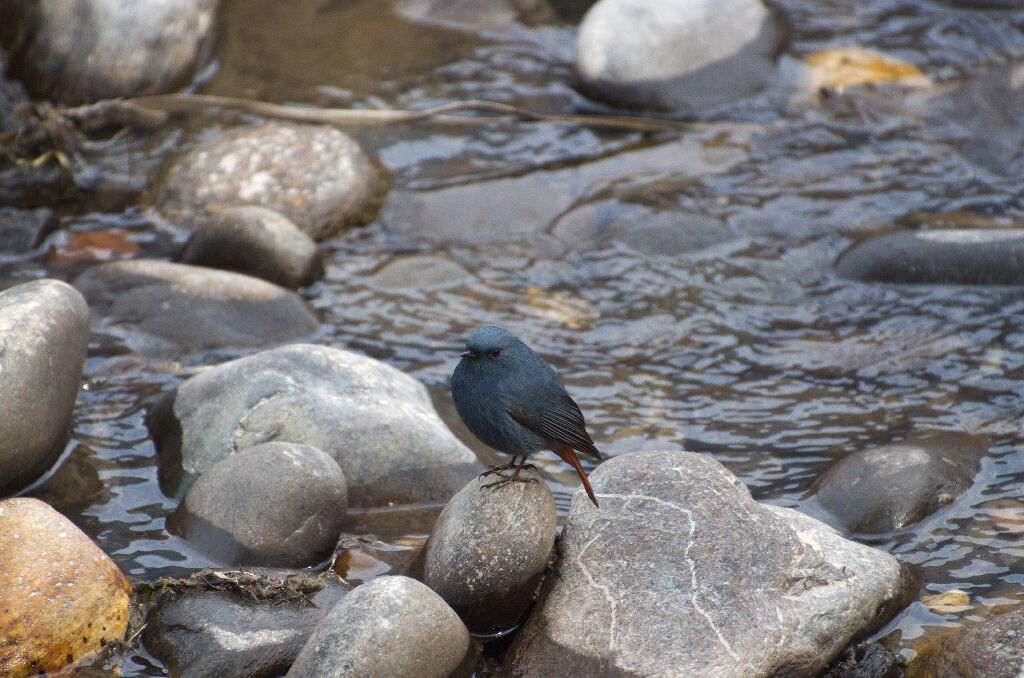
Rhyacornis fuliginosus (Plumbeous water redstart)
Rhyacornis fuliginosus, known as the Plumbeous Water Redstart, is a familiar sight along the fast-flowing streams and rivers of the Great Himalayan National Park (GHNP). With its slate-blue plumage, vibrant orange-red tail, and lively behavior, Rhyacornis fuliginosus captivates birdwatchers exploring the park’s river valleys and rocky waterways. Its preference for freshwater habitats makes it an important species indicating the health of the aquatic ecosystems in GHNP.
The Plumbeous Water Redstart’s constant bobbing motion and melodious calls add to the vibrant soundscape of the park’s rivers and brooks.
Habitat and Distribution in GHNP
In GHNP, Rhyacornis fuliginosus typically inhabits rocky riverbanks, torrent-fed streams, and waterfalls between 1,200 and 3,000 meters elevation. It thrives in habitats where clear, unpolluted water runs through boulder-strewn channels.
The Tirthan, Sainj, and Jiwanal rivers within the park are particularly good places to spot this species. During the winter, some individuals may move slightly to lower elevations, but many remain close to their chosen stretches of river year-round.
Behavior and Diet
Rhyacornis fuliginosus feeds primarily on aquatic insects, small crustaceans, and flying insects caught mid-air or picked from wet rocks. It often perches conspicuously on stones near the water’s edge before sallying forth to catch prey.
The male’s musical song is a familiar sound along mountain streams during the breeding season. Courtship displays involve wing-flicking and tail-fanning, where the bird shows off its vivid red tail feathers.
Nesting typically occurs in crevices of riverbanks or under bridges, where the nest remains safe from predators and floods.
Conservation Significance
Although currently listed as a species of Least Concern, Rhyacornis fuliginosus depends heavily on clean, undisturbed freshwater habitats. Protecting the riverine environments within GHNP ensures the survival of not only the Plumbeous Water Redstart but also many other aquatic and semi-aquatic species.
Monitoring populations of Rhyacornis fuliginosus serves as a useful tool for assessing the ecological health of the park’s freshwater systems.
| Common name | Plumbeous Water Redstart |
| Scientific name | Rhyacornis fuliginosus |
| Family | Saxicolini |
| Description | It is 12 cm found throughout the Great Himalayan National park in the mountain streams and river with an altitudinal zone of >1200 m. It is a commonly seen bird. It was seen singly and also in pair. It opens and closes its tail intermittently while also wagging it. Male is bluish grey with a red tail. The female is grey, mottled with white and base of her tail is also white. |



